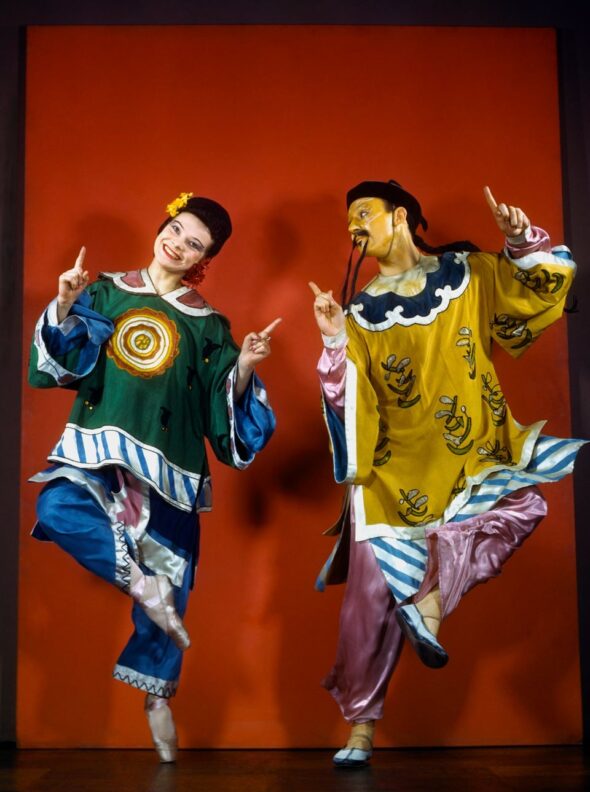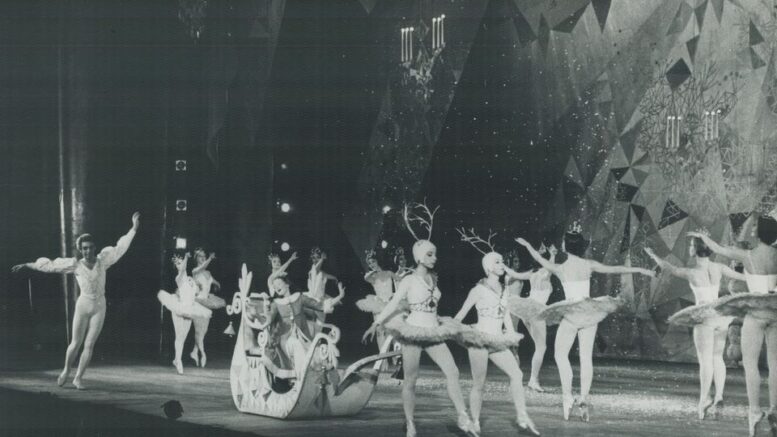By Meoghan Swain
Visions of sugarplums have been dancing in our heads for 131 years since The Nutcracker was first performed in Russia in 1892. The beloved Christmas show is more relevant now than ever, despite its age, as it has become the largest money maker for American ballet companies.
The show has stayed relevant through the years, not only because its joy and magic cause audiences to leave the theatre feeling somewhat elated, but because the modernization of the show, and the world, has not shaken ballet’s value of tradition.
Going to see The Nutcracker has become part of the Christmas tradition in America. In the United States, The Nutcracker is put on annually by ballet companies whereas, in Europe, it is only performed every few years.
“It become the tradition. It’s like having eggnog,” Phillip Broomhead, director of the Orlando Ballet company said.
Because the Nutcracker is one of many holiday festivities, the demand for more performances has grown in recent years. This year, the Orlando Ballet Company will perform up to 20 shows. Because of increasing popularity, they will be putting on more than 27 shows next year, according to Broomhead.
Today, American companies place The Nutcracker in a different category than the other shows performed throughout the year. The Nutcracker is not considered a part of its regular season due to its popularity and the funds it brings in.
“It is its own entity because it brings in so much money,” Broomhead said.
The reason for its popularity goes beyond the fun, colorful costumes, and the Christmas theme. The show has stayed so popular because companies have not lost sight of the value of tradition.
As ballet is an ancient art, its technique and teachings, even today, are immersed in tradition.
The art has evolved since its first popularity in the 1700s and has even evolved since the 1950s and 60s as society has learned more about the science of the body and athletic training. Although it has adapted and developed with time, it still very much stays true to its classical teachings.
Classical technique is so valued because of how it is passed on from generation to generation. The value of this generational tradition is the only reason we can still practice this art today.
“I learned from my teacher who learned from a teacher who learned from Marius Petipa, who was the pioneer in Russia for classical ballet. So by generation, we try to keep this tradition of classical ballet alive,” Roberto Forleo, an artistic director with The Florida Ballet said.
The Nutcracker has been kept alive through the same traditional practices. Each performance, even if it has been adapted or modernized, uses traditional ballet choreography reflective of Petipa’s original choreography.
For example, choreographer Mark Morris modernized The Nutcracker to be more relevant for audiences today. Still using classical ballet choreography, Morris changed the setting of the production to take place in the late 1960s to early 70s instead of the Victorian era.
His modernization kept the tradition of ballet alive as the show only required set and costume alterations. It is a beautiful peace because of how it is both modern in setting and traditional in style.
Morris is not the only choreographer who has done something different with The Nutcracker. Each company’s performance differs in some form. In recent years, companies have adapted the character representation in “The Land of Sweets” to be less stereotypical, which has made each company’s show more modern and unique.
In Act II, Clara enters the land of sweets where each sweet is represented by a different culture. Spanish chocolate, Arabian coffee, and Russian trepak are some of the cultures and sweets included in this act, however, Chinese tea has stirred controversy in recent years as society has made an effort to be culturally less offensive.

As to not be stereotypically offensive, companies have scrapped the traditional Manchu mustache and other potentially offensive representations and made the characters fit the standards of the time
The Orlando Ballet now uses a crane, a symbol of China, as their Chinese tea representation to ensure audiences and dancers do not feel stereotyped.
“Things are sort of morphing and becoming stereotypically less offensive,” Broomhead said.
Although times are changing, the ballet tradition is not. All changes made to the show have been small modifications in costuming and setting. Companies have left the tradition of ballet untouched.
A large reason traditional ballet is so valued by audiences, dancers, and choreographers, is because of its contrast to the fast-paced life that society lives today.
Director Kate Downes Walker of the Sussex Dance Academy, a local ballet school in Delaware, has been seeing the value in the calmness of ballet now more than ever.
“We live in a very fast-paced generation and I believe in ballet as a zen. It’s calm, it’s disciplined, and it’s consistent and it’s adding to what we have been taught over a hundred years ago which is why it’s so unique,” Walker said.
Ballet is grounding and brings audiences back to a simpler time. This potentially is one of the reasons audiences love The Nutcracker at this time of year because of the want to savor the holiday season.
The holiday season is a time immersed with tradition and because The Nutcracker has become an annual show, this tradition heavily impacts young dancers.
Children are the heart of The Nutcracker as it is one of the only ballets where it is possible to involve young dancers.
Compared to other shows, dancers have so many more opportunities to dance a variety of roles in The Nutcracker. The Nutcracker season is a pivotal time for dancers to see where they are technically and how much they have grown.
“It’s like a testing ground at this time of year. People are given the roles and then they have to rise to the occasion,” Broomhead said.
Children often set goals for themselves based on the roles they want to achieve in their dance career. When audiences see a prima ballerina performing the role of the Sugar Plum Fairy, she likely started as a little mouse at age 5 and has grown to fit larger roles.
The Nutcracker tradition is what inspires young dancers to keep going, and oftentimes, to stick with ballet.
“When you see those kids looking at the professional dancers with those eyes, completely captivated, you see that they have dreams,” Forleo said.
The children dream of these roles like Clara dreams of the land of sweets. The value of tradition integrated into ballet, whether it’s the tradition of the classical technique or the tradition of the holiday season, is what sparks excitement in the eyes of little ballerinas.
Their excitement can be seen by audiences as children step on stage at this time of year. When the show ends, the little girls are already planning for the next year to improve their technique and get bigger and better roles. It’s this love for tradition that keeps The Nutcracker and the art of ballet alive.



Be the first to comment on "The heart of the nutcracker’s legacy is tradition"